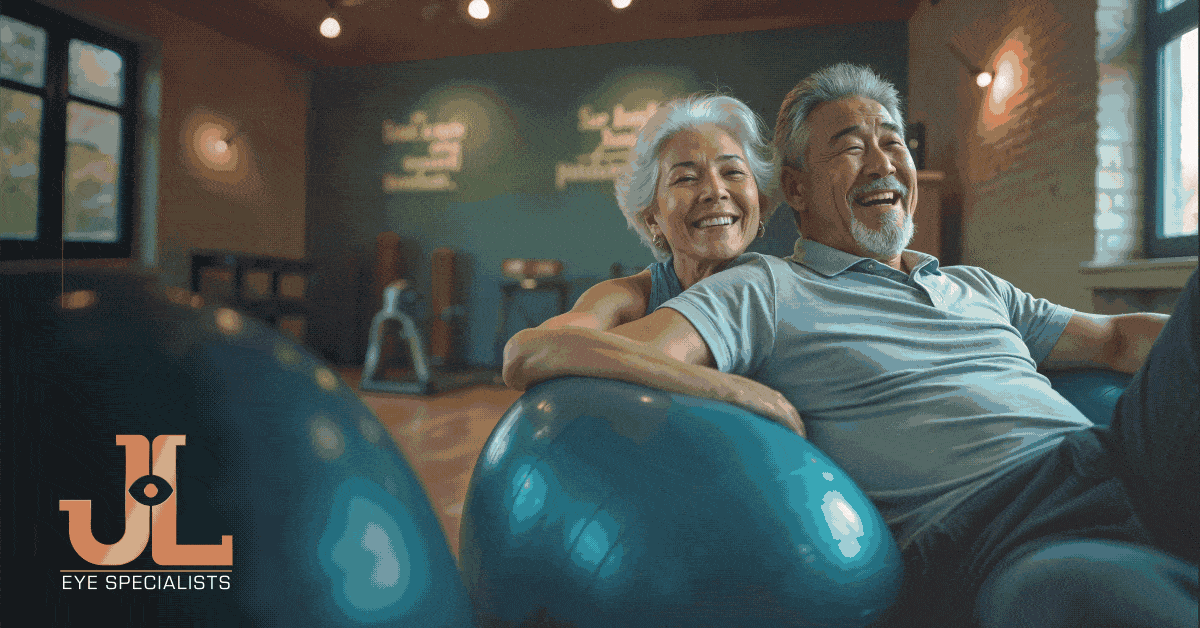7 Ways to Lower Your Risk of Cataracts

Getting cataracts as you get older is not uncommon. By around 40, the proteins in the eye’s lens begin to break down and clump together, creating a cloudy area in your vision. Over time, if cataracts are not treated accordingly, they can make your vision hazy, blurry, or less colourful. By age 60, 63.6 percent of people in Singapore develop cataracts, increasing to a whopping 94.6 percent of people by age 75 or older.
Fortunately, surgery can get rid of cataracts. Cataract surgery is safe and helps correct vision problems. It’s the most widely performed eye surgery in the world. With early intervention, many people enjoy seeing the world clearly in vivid colours.
However, why wait for cataracts to be so severe that you need surgical intervention when you can take steps to lower your risk of cataracts? This blog will provide a rundown of cataract prevention tips to help you avert this sight-threatening condition.
Book a consultation with Dr Jimmy Lim today.
How does a Cataract develop?
In young people, the eye’s lens is clear. However, by the 4th or 5th decade of life, the proteins in your eye’s lens begin to break down and clump together, causing a cloudy area or a cataract.
Early on, the eye condition usually does not interfere with daily activities. But with time, the cataract will progress and make the lens utterly opaque to light, making routine activities difficult. But how exactly does it happen?
The eye’s lens is composed of specialised proteins called crystallins. Membrane protein channels maintain balance across the lens, and the crystallins are protected against oxidation. The proteins absorb radiation energy for long periods without affecting their optical properties. But ageing comes with oxidative stress, which can cause an imbalance in the eye’s equilibrium. As a result, the production of free radicals can cause damage to all components of the cells, including proteins, lipids and DNA.
Oxidative processes in the lens cause proteins to break down and form clusters, creating opaque areas that can lead to vision loss. As a result, the lens scatters light rather than transmitting it. Ultimately, this can prevent light from passing through the lens and causing vision loss.
Based on the location of these opaque areas within the lens, age-related cataracts or senile cataracts are classified into three types — cortical, nuclear, and posterior subcapsular cataracts.
Nuclear sclerosis is the hardening and yellowing of the central part of the lens. As the lens core hardens, it causes nearsightedness or blurred distance vision. It is the reason why patients relied on reading glasses in the past. Also, patients may see colours less vividly with this type of cataract. Cortical cataracts occur when the portion of the lens fibres around the nucleus starts to form opaque areas.
Common symptoms of this cataract type include glare, decreased contrast sensitivity, and decreased distance and near vision. Lastly, the posterior subcapsular cataract develops when the clouding occurs under the lens capsule. It tends to appear in younger patients. Again, signs and symptoms include glare, rapidly diminishing vision, and difficulty seeing close objects instead of distant ones.
Read: 10 Things You Should Know About Cataracts
How to prevent Cataract formation
There is no surefire way to prevent cataracts, although you can lower your risk. Here are ways for cataract prevention.
1. Protect your eyes from harmful ultraviolet rays
It is well known that exposure to ultraviolet (UV) light from the sun can cause skin damage. Recently, scientists have also linked UV light and cataract formation. One way to protect the eyes is wearing sunglasses whenever you need to go out in the sun. You can also wear eyeglasses with a UV-blocking coating. Remember to wear your sunglasses even if it’s not sunny, as UV rays are still present.
2. Quit smoking, or don’t start at all
Smoking cigarettes is also a big no-no if you want to lower your risk of cataracts. Smoking can increase the number of free radicals in the eyes. These destroy lipids and proteins, causing deposits to clump and form on the eye’s lens. It is known that heavy smokers, those who smoke 15 cigarettes a day or more, are three times more likely to develop cataracts than non-smokers. Therefore, if you smoke, now is the time to stop, and if you don’t smoke, don’t start.
3. Avoid heavy drinking
Alcohol consumption may slightly increase your risk of cataracts. The more you drink, the greater the risk becomes. A study found that drinking more than one alcoholic drink daily was tied to a modest increase in cataract risk. If you’re a heavy drinker, talk with your doctor about getting the needed support to help you quit.
4. Maintain a healthy diet
The food you consume can affect your eye health, too. A healthy diet helps you get the necessary vitamins and nutrients your body needs. It can also help you reduce your risk of getting cataracts.
Studies have shown that eating foods high in vitamins C and E, zeaxanthin, and lutein may reduce your risk of cataracts. Antioxidants and vitamins can help reduce the risk of cataracts by promoting overall eye health. Foods high in omega-3 fatty acids, such as salmon and flaxseed, should be consumed along with yellow and dark leafy vegetables.
5. Keep your blood sugar in check
Ageing can make the lens of your eyes less flexible, thicker, and less transparent. An uncontrolled blood sugar level can damage the lens, causing cataracts to develop more rapidly. Furthermore, your lens swells if you have high blood glucose for extended periods. The lens also turns blood sugar into sorbitol, which can collect in the lens and eventually lead to cataract formation.
The most common type of cataract in diabetic people is the senile type. However, those with type 1 diabetes or insulin-dependent often develop snowflake cataracts, a rare type wherein white specks that resemble snowflakes form in the lens.
6. Manage other health conditions
Many medical conditions can predispose you to cataracts later in life. You’re more likely to develop cataracts if you have uncontrolled diabetes and high blood pressure. Consult your doctor and take your medicines as prescribed to prevent or slow their progression.
7. Schedule regular eye exams
Getting your eyes checked regularly is an imperative step to prevent cataract formation. Doctors recommend having routine eye exams if you’re over 40 years old every two to four years. For those over 65, your eye exams will be conducted every one to two years. You may have to visit your doctor more often for those at high risk of eye problems. Spotting eye problems like cataracts early is important in preventing their progression.
.
Read: 6 Factors That Affect the Cost of Cataract Surgery in Singapore
Why routine eye exams are important
Cataracts are the leading cause of vision loss worldwide. Every year, about 5 million newly diagnosed cases of cataract blindness are reported.
Vision loss is debilitating and takes a toll on anyone’s life. However, it’s good news that these steps can slow down cataract progression, allowing you to enjoy your sight for many years.
.
That’s why it’s essential to keep your eyes healthy by scheduling regular eye exams. We hope this article on cataract prevention sheds light on how to lower your risk.
Please schedule a consultation to learn more about cataracts, the types of cataract surgery, and how to spot them. Our medical director, Dr Jimmy Lim at JL Eye Specialists, will help tailor your treatment plan.







